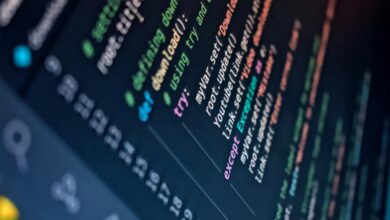Software Reviews
The Best Software for Data Analysis and Visualization: A Comprehensive Guide

In today’s data-driven world, the ability to analyze and visualize data effectively is crucial for making informed decisions. Whether you’re a data scientist, business analyst, researcher, or marketer, choosing the right software can significantly enhance your ability to extract insights from complex datasets. In this guide, we’ll explore the best tools available for data analysis and visualization, highlighting their features, strengths, and ideal use cases.
1. Key Considerations When Choosing Data Analysis and Visualization Software
Before diving into specific tools, it’s important to understand what factors to consider when selecting software:
1. Ease of Use
- Look for intuitive interfaces, especially if you’re not a coding expert.
- Drag-and-drop functionality or pre-built templates can simplify workflows.
2. Scalability
- Ensure the software can handle large datasets and scale with your needs.
3. Integration
- Compatibility with other tools (e.g., Excel, SQL databases, cloud platforms) is essential for seamless workflows.
4. Customization
- Advanced users may require customizable features, scripting capabilities, or APIs.
5. Visualization Capabilities
- High-quality charts, graphs, and dashboards are critical for presenting insights clearly.
6. Cost
- Free, open-source options are great for beginners, but premium tools often offer advanced features and support.
2. Top Software for Data Analysis and Visualization
1. Microsoft Power BI
- Overview: Power BI is a business analytics tool by Microsoft that transforms raw data into interactive visualizations and reports.
- Best For: Business analysts, marketers, and organizations using Microsoft ecosystems.
- Key Features:
- Seamless integration with Excel, Azure, and other Microsoft products.
- Real-time dashboards and automated data refreshes.
- AI-powered insights and natural language queries.
- Collaboration features for team projects.
- Pros:
- User-friendly interface with drag-and-drop functionality.
- Affordable pricing plans, including a free version.
- Strong community support and extensive documentation.
- Cons:
- Limited advanced statistical modeling compared to Python or R.
- Performance issues with extremely large datasets.
2. Tableau
- Overview: Tableau is a leading data visualization platform known for its powerful and visually appealing dashboards.
- Best For: Data analysts, business intelligence professionals, and enterprises.
- Key Features:
- Interactive dashboards and dynamic filtering.
- Wide range of chart types and mapping tools.
- Integration with multiple data sources (SQL, cloud services, etc.).
- Tableau Prep for data cleaning and transformation.
- Pros:
- Intuitive drag-and-drop interface.
- Excellent for storytelling with data.
- Strong mobile and web capabilities.
- Cons:
- Expensive, especially for small businesses or individuals.
- Steeper learning curve for advanced features.
3. Python (Pandas, Matplotlib, Seaborn, Plotly)
- Overview: Python is a versatile programming language widely used in data science, offering libraries like Pandas for analysis and Matplotlib/Seaborn/Plotly for visualization.
- Best For: Data scientists, researchers, and developers comfortable with coding.
- Key Features:
- Pandas for data manipulation and cleaning.
- Matplotlib and Seaborn for static visualizations.
- Plotly for interactive charts and dashboards.
- Jupyter Notebooks for exploratory analysis.
- Pros:
- Highly customizable and flexible.
- Extensive libraries for machine learning and advanced analytics.
- Free and open-source.
- Cons:
- Requires programming knowledge.
- Longer setup time compared to GUI-based tools.
4. R (ggplot2, Shiny)
- Overview: R is a statistical programming language designed specifically for data analysis and visualization.
- Best For: Statisticians, academics, and researchers.
- Key Features:
- ggplot2 for creating publication-quality visualizations.
- Shiny for building interactive web applications.
- Comprehensive statistical modeling capabilities.
- CRAN repository with thousands of packages.
- Pros:
- Industry-standard for statistical analysis.
- Rich ecosystem for specialized tasks.
- Free and open-source.
- Cons:
- Steeper learning curve than GUI tools.
- Less user-friendly for non-technical users.
5. Google Data Studio
- Overview: Google Data Studio is a free tool for creating interactive dashboards and reports, integrated with Google’s suite of products.
- Best For: Small businesses, marketers, and teams using Google Analytics.
- Key Features:
- Real-time collaboration and sharing.
- Integration with Google Sheets, Analytics, Ads, and BigQuery.
- Customizable templates and themes.
- Free to use with no hidden costs.
- Pros:
- Easy to learn and use.
- Fully integrated with Google’s ecosystem.
- No cost for basic features.
- Cons:
- Limited advanced analytics capabilities.
- Fewer customization options compared to Tableau or Power BI.
6. Qlik Sense
- Overview: Qlik Sense is a self-service data analytics platform that enables users to create interactive dashboards and perform associative analysis.
- Best For: Enterprises and organizations requiring robust business intelligence solutions.
- Key Features:
- Associative engine for uncovering hidden relationships in data.
- AI-driven insights and augmented analytics.
- Mobile-first design for on-the-go access.
- Scalable architecture for large datasets.
- Pros:
- Powerful associative analysis capabilities.
- Strong focus on enterprise-grade security.
- Flexible deployment options (cloud, on-premises, hybrid).
- Cons:
- Higher cost compared to some competitors.
- May require training for optimal use.
7. Excel
- Overview: Microsoft Excel remains one of the most widely used tools for data analysis and visualization, especially in small businesses and educational settings.
- Best For: Beginners, small teams, and quick analyses.
- Key Features:
- PivotTables for summarizing data.
- Built-in chart types (bar, line, pie, etc.).
- Add-ins like Power Query and Power Pivot for advanced capabilities.
- Familiar interface for most users.
- Pros:
- Widely accessible and easy to learn.
- Cost-effective as part of Microsoft Office.
- Ideal for small-to-medium datasets.
- Cons:
- Limited scalability for big data.
- Manual processes can be time-consuming.
8. Looker (by Google Cloud)
- Overview: Looker is a modern data platform that combines business intelligence, data exploration, and embedded analytics.
- Best For: Enterprises leveraging cloud infrastructure and real-time analytics.
- Key Features:
- Unified platform for data modeling and visualization.
- Integration with Google BigQuery and other cloud databases.
- Collaborative dashboards and shared insights.
- Customizable reporting and embedding options.
- Pros:
- Scalable and cloud-native.
- Strong focus on real-time data.
- Excellent for collaborative environments.
- Cons:
- Pricing can be prohibitive for smaller organizations.
- Requires technical expertise for setup and customization.
3. How to Choose the Right Tool for Your Needs
1. Assess Your Skill Level
- If you’re new to data analysis, start with user-friendly tools like Power BI or Google Data Studio.
- For advanced users, Python, R, or Looker may be more suitable.
2. Evaluate Your Data Size
- Tools like Tableau and Qlik Sense excel with large datasets, while Excel may struggle.
3. Consider Budget
- Free tools like Google Data Studio and Python are great for startups or individuals.
- Premium options like Tableau and Looker are better suited for enterprises.
4. Test Before Committing
- Many tools offer free trials or versions. Experiment to see which aligns best with your workflow.
4. Tips for Effective Data Analysis and Visualization
- Start Simple: Begin with basic charts and gradually incorporate more complex visualizations.
- Tell a Story: Use visuals to guide viewers through your findings logically.
- Focus on Clarity: Avoid cluttered charts; highlight key insights instead.
- Automate Where Possible: Use tools that allow scheduled updates and real-time dashboards.




